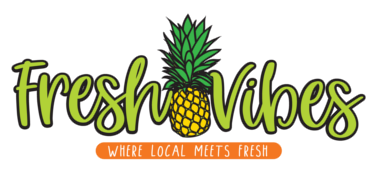There’s no doubt, if you are eating a plant-based diet you’ve probably been asked where you get your protein from. Today it seems like our American culture is obsessed with protein—especially protein coming from animal products. This big push to add excess protein in the diet can potentially do more harm than good. We want to help you debunk some of the myths you’ve been told about protein and provide you with some resources when those loved ones ask you about your protein intake.
How much protein do we actually need?
Your body only needs 0.8 grams of protein per kilogram of body weight each day. To put that in perspective, a 180-pound man would need approximately 65 grams of protein. This is achieved easily in the Standard American Diet, but often in an unhealthy excess. A research study published in 2014 noted that diets heavy in animal protein were linked to a five-fold increase in death risk of diabetes and a four-fold increase in death risk from cancer. For the first time ever, the Office of Disease Prevention and Health Promotion stated in the Dietary Guidelines for Americans that certain populations, primarily men and teenage boys, should reduce their overall consumption of high protein foods, such as meat, as a way to improve their health.
Sources of Protein
There are many plant-based foods that are packed with protein. An added benefit of consuming these plant-based protein sources is that your body will get the benefits of protein but will also gain fiber, vitamins/minerals, and phytonutrients without the added calories, fats, and other harmful additions animal-based protein sources bring.
Here are some of the top plant-based protein sources:
Soy Products: These products are rich in plant-based protein and include foods such as tofu, edamame, and tempeh. Per half cup serving, tofu contains approximately 10 grams of protein, edamame contains 8.5 grams, and tempeh contains about 15 grams. These products can be easily incorporated into your diet as meat substitutes or added as a topping to a salad or favorite dish.
Legumes: Legumes are classified as foods such as lentils, peas, beans, soybeans, and peanuts. Lentils and chickpeas are among the legumes with the highest protein content. Per half cup serving, lentils contain 8.84 grams of protein and chickpeas contain 7.25 grams. You can easily add these into your diet by incorporating lentils into a stew or making your own hummus with chickpea paste.
Quinoa: This grain has gained popularity among the health food consumers in the last few years. What many people do not know is that quinoa is a complete protein—meaning it contains all of the amino acids. Per one cup serving, quinoa contains 8 grams of protein. Additionally, quinoa provides the body with iron, fiber, and manganese. Quinoa can be served as a side on its own or can be a good substitute for pasta.
Hemp Seeds: Just like quinoa, hemp seeds are considered to be a complete protein. Hemp seeds contain 5 grams of protein per tablespoon. Hemp seeds can be found at your local grocery store or online. You can incorporate them into your diet by sprinkling them on your oatmeal, blended in a smoothie, or topped on an avocado toast.
There are many other protein packed plant-based foods including vegetables, potatoes, and breads. Did you know—one large baked potato contains 8 grams of protein!
Bottom Line
Our Western culture has become obsessed with protein intake, and it is costing us our health. Animal protein is a potentially harmful substance that has been linked to many diseases, including cancer. There are many plant-based protein sources that are better for your overall health. At FreshVibes we offer many of the top protein sources such as spirulina, hemp seeds, chia seeds, and nut butters. For more detailed information on protein and plant-based eating, check out the resources below.
References:
https://nutritionfacts.org/2013/02/14/animal-protein-and-igf-1/
https://www.medicalnewstoday.com/articles/321474.php
https://www.pcrm.org/good-nutrition/nutrition-information/protein
https://www.pcrm.org/news/blog/where-do-you-get-your-protein

Recent Comments